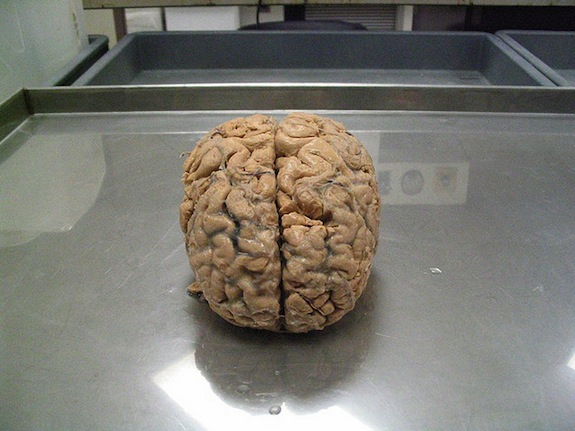The Brains of People With Walking Corpse Syndrome Might Actually Be Shutting Down
People with Walking Corps Syndrome, also called Cotard’s syndrome, feel as though they are dead

Image: karmaOWL
Walking Corpse Syndrome isn’t the name of a new zombie television show: it’s a rare and very mysterious disorder. People with Walking Corps Syndrome, also called Cotard’s syndrome, feel as though they are dead. They believe they are dead, and they go through life convinced of the fact that they have already died.
United Academics describes one case:
Graham spent his time at the graveyard. His visits would last so long that the local police would find him there, among the gravestones, and bring him back home. He had been suffering from severe depression and several months prior attempted suicide by bringing an electrical appliance into the bath. Graham believed that his brain was dead. He felt he had fried it in the bath. Now living a sort of half-life, stuck between being alive but having a dead brain, Graham’s trips to the cemetery served as the closest connection he could make with death.
According to his case study, when Graham went to the doctor, he explained that “I am coming to prove that I am dead” and said that he didn’t need to eat or sleep. “He acknowledged that his abilities to see, hear, think, remember and communicate proved that his mind must be alive: he could not explain how his mind could be alive if his brain was dead, but he was certain that this was the case,” the case study says.
Very few people with Cotard’s syndrome have been diagnosed, and even fewer studied. The syndrome is incredibly rare, and the majority of what doctors know about it are based on a handful of case studies like Graham’s. Researchers recently took scans of Graham’s brain, to see if there was anything unusual going on, and what they found was that large parts of his brain had shut down. Throughout large parts of the frontal cortex, Graham had extremely low rates of metabolism, sort of like it was already asleep or shut off.
One of the doctors who looked at Graham told New Scientist:
“I’ve been analysing PET scans for 15 years and I’ve never seen anyone who was on his feet, who was interacting with people, with such an abnormal scan result,” says Laureys. “Graham’s brain function resembles that of someone during anaesthesia or sleep. Seeing this pattern in someone who is awake is quite unique to my knowledge.”
While the antidepressants that Graham takes could explain some of this metabolic shut down, it probably doesn’t explain it all. And while Graham is just one patient, doctors wonder whether perhaps this slumbering of the brain might be what causes patients to feel as though they’re dead.
More from Smithsonian.com:
/https://tf-cmsv2-smithsonianmag-media.s3.amazonaws.com/accounts/headshot/Rose-Eveleth-240.jpg)
/https://tf-cmsv2-smithsonianmag-media.s3.amazonaws.com/accounts/headshot/Rose-Eveleth-240.jpg)